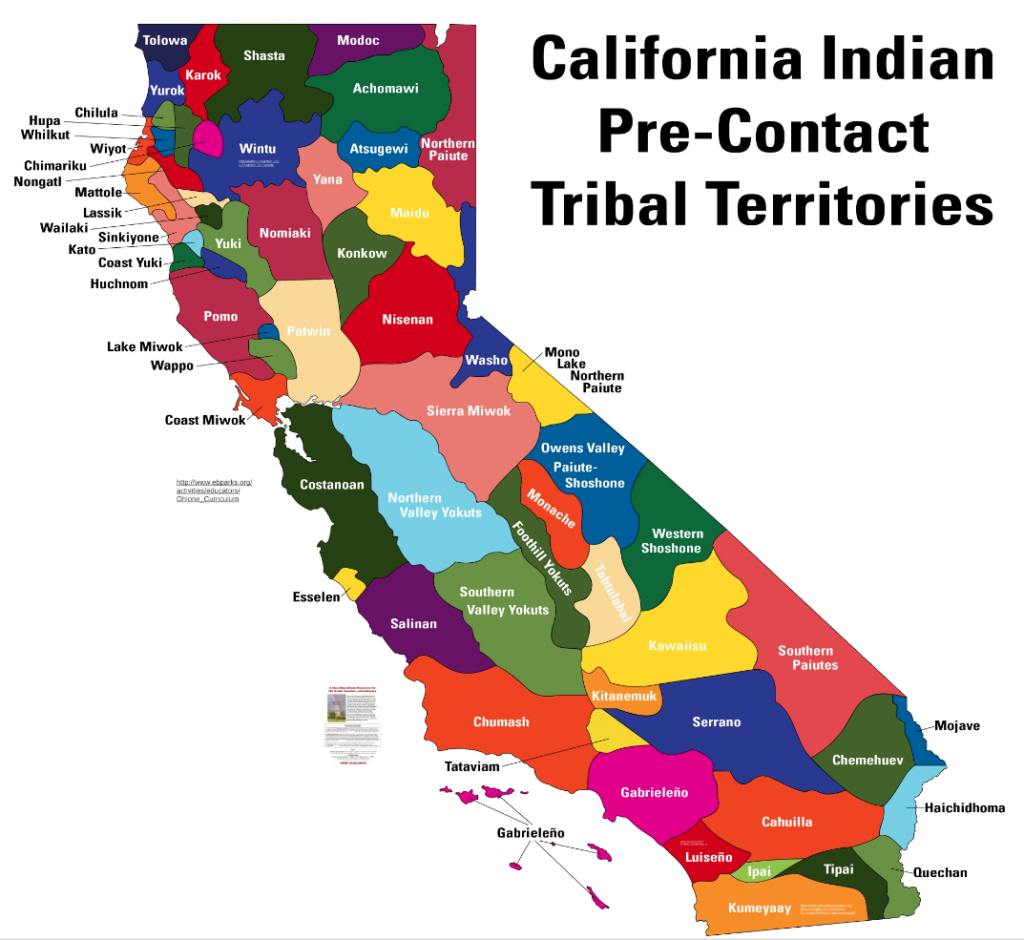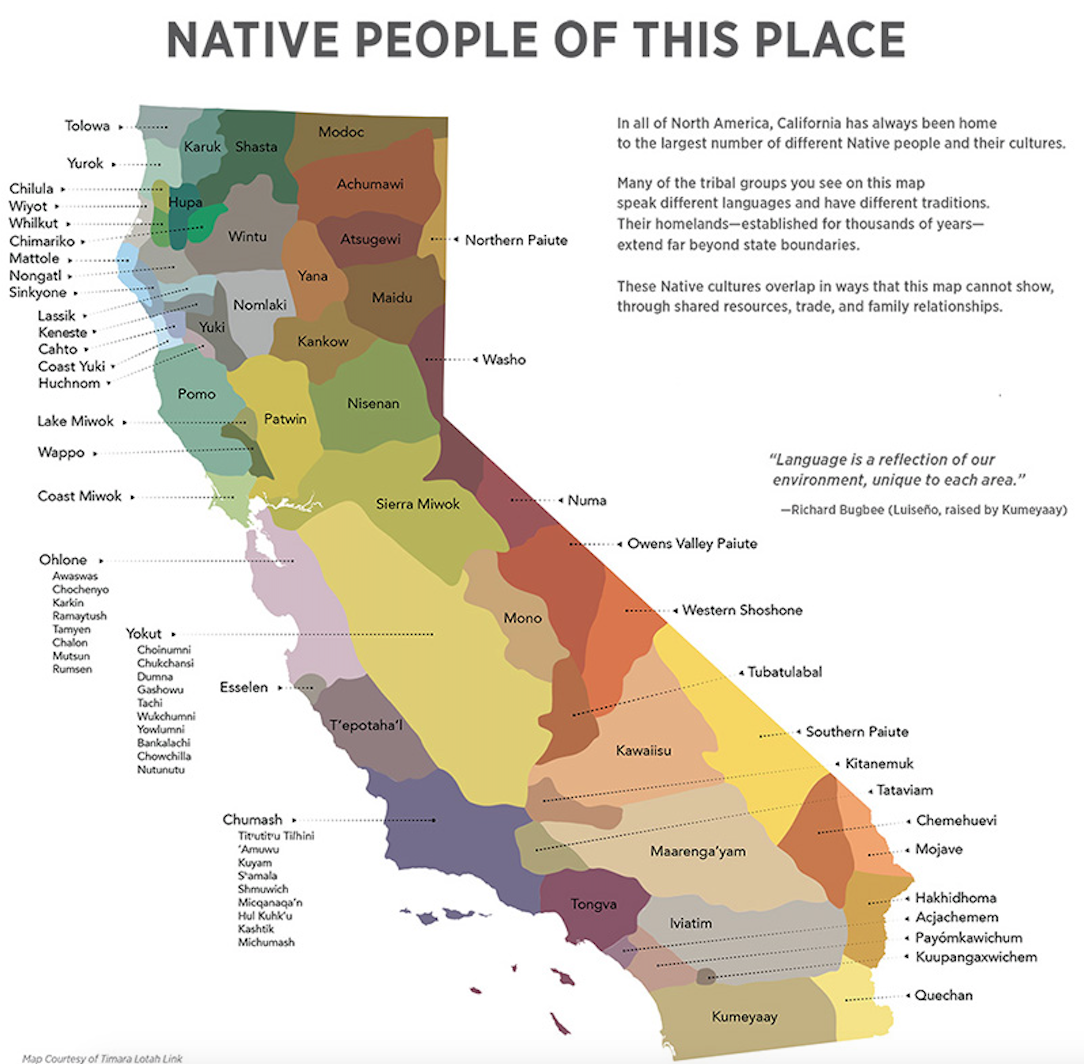A Tapestry of Cultures: Understanding the California Native American Tribes Map
Related Articles: A Tapestry of Cultures: Understanding the California Native American Tribes Map
Introduction
In this auspicious occasion, we are delighted to delve into the intriguing topic related to A Tapestry of Cultures: Understanding the California Native American Tribes Map. Let’s weave interesting information and offer fresh perspectives to the readers.
Table of Content
A Tapestry of Cultures: Understanding the California Native American Tribes Map

The California Native American Tribes Map is a powerful visual representation of the rich and diverse history of indigenous peoples in the state. It serves as a crucial tool for understanding the pre-colonial landscape, the intricate relationships between tribes, and the lasting impact of colonization on Native American communities.
A Diverse and Complex Landscape
California, prior to European contact, was home to a vibrant and diverse array of Native American cultures. The map reveals a complex tapestry of over 100 distinct tribes, each with its own language, traditions, and way of life. These tribes were not homogenous, but rather a collection of unique groups, each adapted to their specific environment and resources.
The map showcases the geographical distribution of these tribes, highlighting their unique relationships with the land. The coastal tribes, such as the Chumash and the Yurok, relied heavily on marine resources, while the interior tribes, like the Miwok and the Paiute, were more dependent on hunting and gathering in the diverse landscapes of the Sierra Nevada mountains and the Great Basin.
Beyond Geographical Boundaries: Cultural Connections and Interactions
The California Native American Tribes Map extends beyond mere geographical boundaries, illustrating the complex web of cultural connections and interactions that existed between these tribes. The map reveals trading networks, intertribal alliances, and even instances of conflict that shaped the social and political landscape of pre-colonial California.
For example, the map highlights the importance of the Yurok tribe in the northern region, which served as a central trading hub for tribes along the Klamath River. This trade network extended far beyond the immediate vicinity, demonstrating the interconnectedness of Native American cultures across California.
The Legacy of Colonization and Its Impact
The California Native American Tribes Map also serves as a poignant reminder of the devastating impact of colonization on Native American communities. The arrival of European settlers brought disease, displacement, and forced assimilation, leading to a drastic decline in population and the erosion of traditional ways of life.
The map highlights the forced removal of tribes from their ancestral lands, the establishment of missions, and the subsequent impact on Native American culture and identity. The map is a powerful tool for understanding the historical injustices faced by Native Americans in California and the ongoing struggle for self-determination and cultural preservation.
A Tool for Education, Understanding, and Reconciliation
The California Native American Tribes Map is a valuable resource for educators, researchers, and anyone seeking to understand the rich history and legacy of Native American cultures in California. It provides a visual framework for exploring the diverse traditions, languages, and stories of these communities.
FAQs about the California Native American Tribes Map
Q: How many Native American tribes were originally present in California?
A: There were over 100 distinct Native American tribes in California before European colonization.
Q: What are some of the most prominent tribes in California?
A: Some of the most prominent tribes include the Chumash, Yurok, Miwok, Paiute, Pomo, and Karuk, among many others.
Q: Why is the California Native American Tribes Map important?
A: The map is important because it provides a visual representation of the diversity and complexity of Native American cultures in California, highlighting their unique relationships with the land, their cultural connections, and the impact of colonization.
Q: What are some of the challenges faced by Native American communities in California today?
A: Native American communities in California continue to face challenges such as poverty, lack of access to healthcare, and the erosion of traditional cultural practices.
Tips for Using the California Native American Tribes Map
- Explore the geographical distribution of tribes: Examine the map to understand the relationship between tribes and their environment.
- Identify key trading networks and cultural connections: Analyze the map to understand the interconnectedness of Native American cultures across California.
- Research specific tribes: Use the map as a starting point to explore the history, culture, and traditions of individual tribes.
- Connect the map to historical events: Relate the map to the impact of colonization, missionization, and the forced removal of tribes from their ancestral lands.
Conclusion: Preserving History, Honoring Heritage
The California Native American Tribes Map is a powerful testament to the resilience and enduring spirit of Native American communities in California. It serves as a vital tool for understanding the past, acknowledging the injustices of the present, and working towards a future where Native American cultures are celebrated and honored. By using this map as a guide, we can learn from the past, foster understanding, and contribute to the ongoing efforts of Native American communities to reclaim their heritage and build a brighter future.







Closure
Thus, we hope this article has provided valuable insights into A Tapestry of Cultures: Understanding the California Native American Tribes Map. We thank you for taking the time to read this article. See you in our next article!